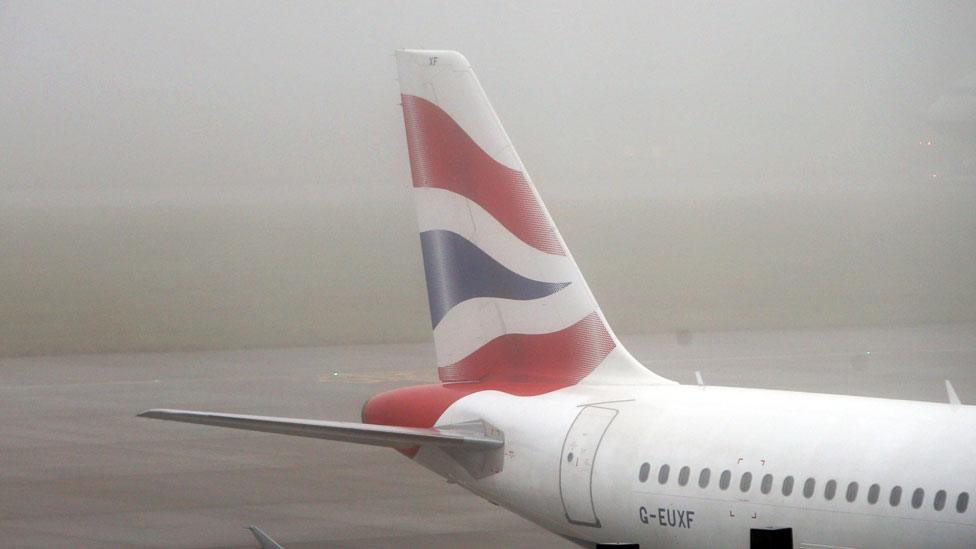Who, What, Why: Why does fog still disrupt flights?
- Published

Thick fog is causing flights to be delayed and cancelled at airports around the UK. But, with modern technology, why is this still happening, asks Justin Parkinson.
Special procedures kick in at UK airports when fog cuts visibility to less than 600m.
Under this system, passenger planes are fitted with an instrument landing system (ILS), which allows them to be guided towards the airport by a radio signal. It also directs them on take-off.
"The runway must be completely clear so as not to interfere with the ILS, so aircraft are more widely spaced," says Jon Proudlove, National Air Traffic Services' general manager for Heathrow. This means spacing flights more widely apart, typically 50% more than usual, external.
There are different levels of ILS, external. The most sophisticated version, requiring a high level of pilot training, allows planes to land even in conditions of zero-visibility. The large airlines usually have this in place.
Less sophisticated systems require the pilot to have some view of the runway before landing. In the worst conditions, planes having this level of ILS wouldn't be able to land, meaning more diversions, delays and cancellations.
The big slowdown problems, though, are on the ground, says Guy Gratton, head of airborne science and technology at the National Centre for Atmospheric Science, external.
Taxiing usually involves the pilot and air-traffic controllers seeing where to manoeuvre the plane. When this is not possible, larger airports such as Heathrow use a ground radar system, enabling controllers to guide pilots towards the terminal or runway, even when there's no visibility. But this happens at a slower pace than usual.
"When you consider that Heathrow is at something like near-full capacity at the best of times, using this system will slow things down further," says Gratton.
If the airport does not have ground radar in place, a truck bearing the illuminated message "Follow me" could be used to guide the plane into position, says Gratton. This takes longer too, as the vehicle has to get into place first and takes the plane along more slowly than usual.
During World War Two the Royal Air Force experimented by burning large amounts of fuel, external on either side of runways to help disperse fog, but this was not continued.
Subscribe to the BBC News Magazine's email newsletter to get articles sent to your inbox.
- Published26 October 2015
